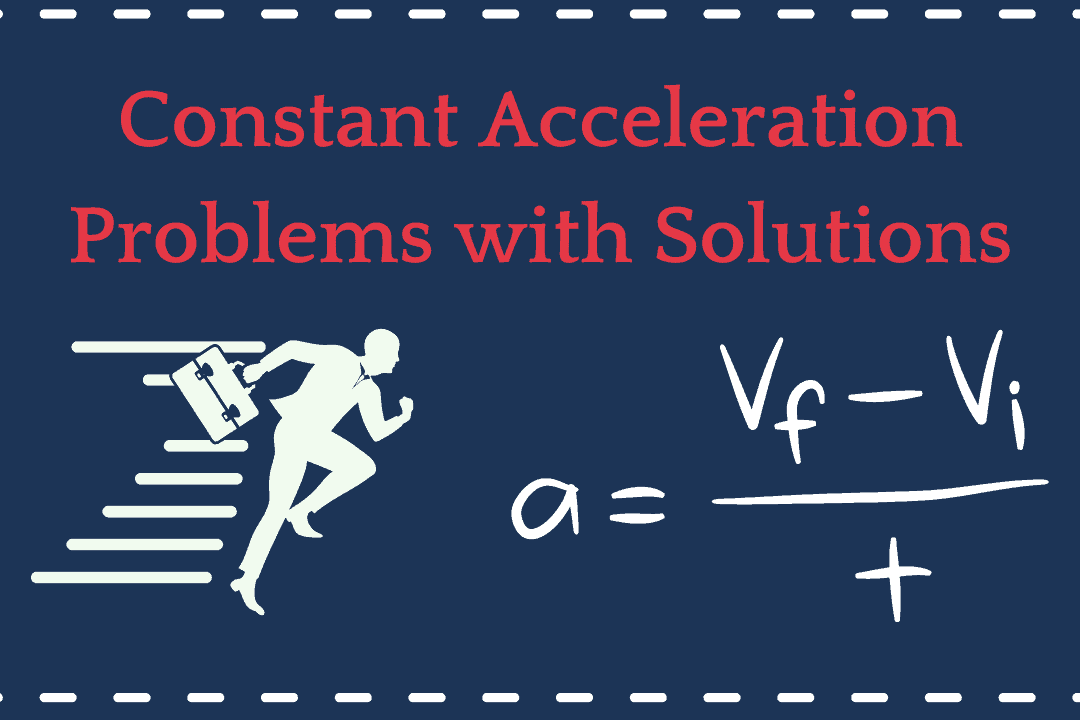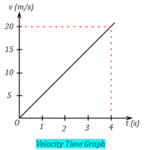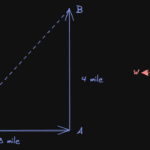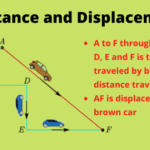Displacement is a fundamental concept in physics, particularly in the study of kinematics. Understanding whether displacement is a vector or a scalar quantity is important for solving problems related to motion.
In this discussion, we will define what displacement is, distinguish between vector and scalar quantities, and finally establish the nature of displacement.
Definitions
Displacement
Displacement refers to the change in position of an object. It is defined as the shortest distance between the initial and final positions of the object, along with the direction of that distance.
Mathematically, displacement \( \vec{d} \) is given by:
\[
\vec{d} = \vec{r}_{\text{final}} – \vec{r}_{\text{initial}}
\]
where \( \vec{r}_{\text{final}} \) and \( \vec{r}_{\text{initial}} \) are the final and initial position vectors, respectively.
Vector Quantity
A vector quantity is one that has both magnitude and direction. Examples include velocity, acceleration, and force.
Scalar Quantity
A scalar quantity is one that has only magnitude and no direction. Examples include speed, mass, and temperature.
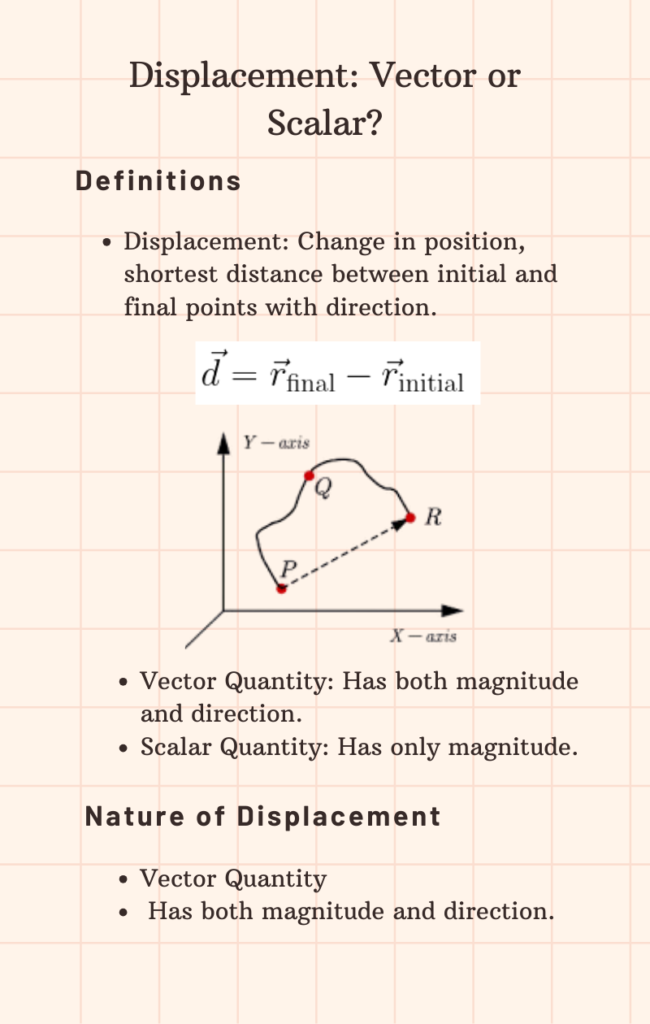
Displacement Vector or Scalar?
Displacement is a vector quantity. This is because it has both magnitude (the shortest distance between the initial and final positions) and direction (the direction in which that distance is measured).
Questions and Answers
Can displacement be negative?
Yes, displacement can be negative if the direction of the final position is opposite to the reference direction.
Is distance a vector or scalar?
Distance is a scalar quantity as it has only magnitude and no direction.
How is displacement different from distance?
Distance is the total path length covered, irrespective of direction, whereas displacement is the shortest distance between the initial and final positions along with its direction.
What is the unit of displacement?
The unit of displacement is meter (m) in the International System of Units (SI).
Can displacement be zero?
Yes, displacement can be zero if the object returns to its initial position.
How is displacement represented in equations of motion?
In equations of motion, displacement is often represented by \( s \) or \( \vec{d} \).
Further Reading
Conclusion
Displacement is a vector quantity as it possesses both magnitude and direction. Understanding this is essential for solving problems in kinematics and other areas of physics.
Feel free to refer to the further reading links for a more in-depth understanding of related topics.

